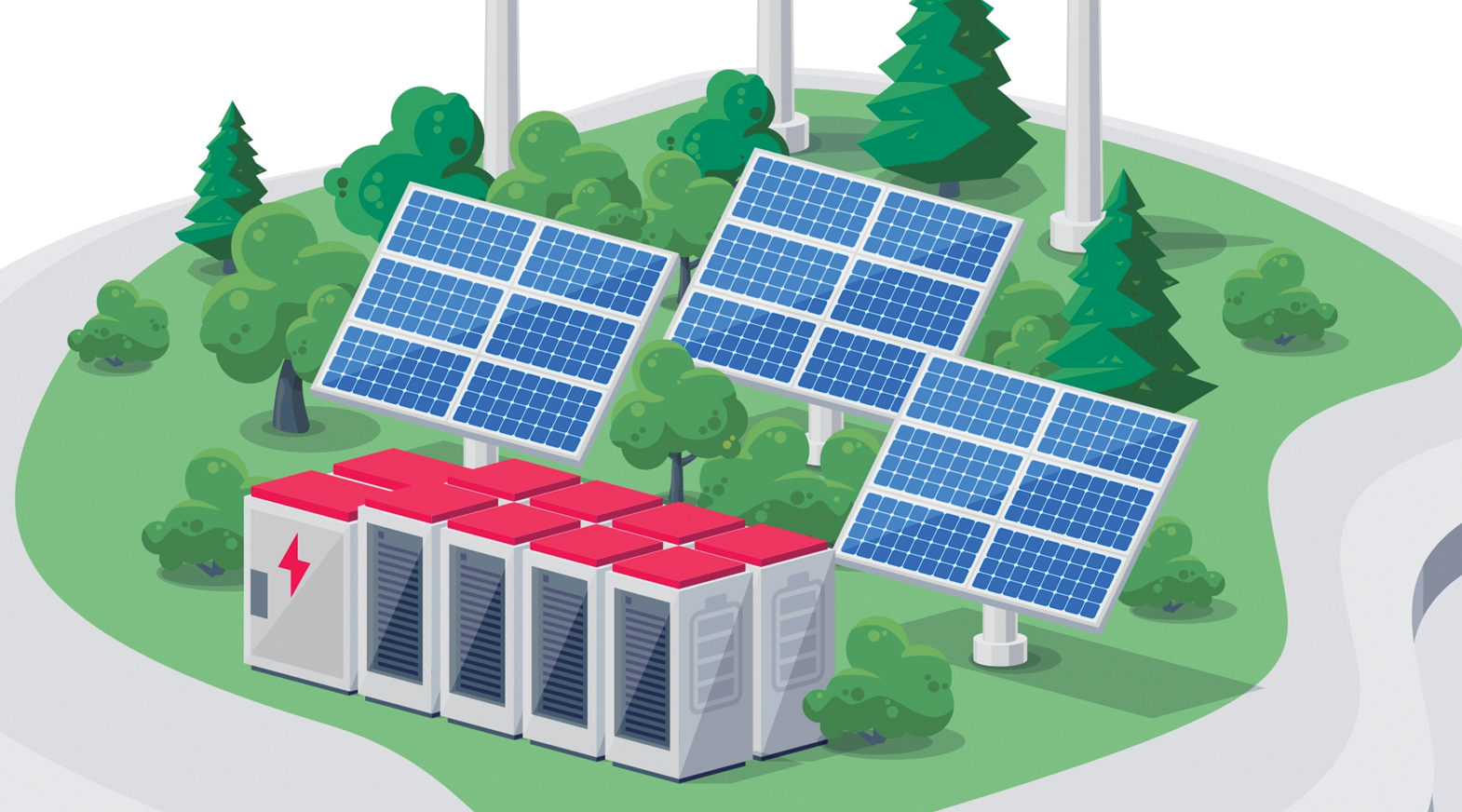A richer harvest
-
- from Shaastra :: vol 02 issue 04 :: Jul - Aug 2023

An emerging market in carbon credits has the potential to help farmers enhance their income and reduce emissions.
Usha Barwale Zehr, 60, has spent a large part of her professional life bettering agriculture through seed improvement. After a PhD in agronomics in the U.S., she found her place in the seed-producing company Mahyco, founded by her father B.R. Barwale, as its Chief Technology Officer. Her work focused on improving farm productivity with new advances in technology.
The challenge for agriculture is now to feed a greater number of people while ensuring that it doesn't continue to add chemicals into soil and water, and release greenhouse gases (GHGs) into the atmosphere.
There is a rising demand for credits generated through natural projects. The focus for these credits is shifting from energy to agriculture.
In line with these new requirements, in 2018 Zehr co-founded Grow Indigo — a joint venture of Mahyco Grow, Mahyco's research and innovation arm; and Indigo Ag, a U.S.-based agri-tech company that leverages science and technology to improve sustainability and profitability. With over 200 data scientists, agronomists, engineers and researchers on board, it is preparing the fields — 40,000 hectares of them — across Punjab, Haryana and the National Capital Region for a new 'crop': carbon.
Grow Indigo applies regenerative agricultural practices to the field, with the aim of earning carbon credits for these interventions. It has submitted its project, 'Regenerative agriculture in rice-wheat-maize system for income generation,' with the non-profit Verra, which manages the world's leading carbon crediting programme, the Verified Carbon Standard Program. A credit issued by Verra can be sold in the international market to companies and countries that need to offset their emissions. One carbon credit equals one ton of carbon dioxide — or the equivalent in other GHGs like methane and nitrous oxide — reduced, sequestered or avoided.
FUTURE IN CARBON
Zehr hopes that the first set of credits can be generated within the next few years. The company has raised a cumulative funding of $13 million, an indication that investors see a good future in India's carbon farming.
Agri-carbon credit is a relative newcomer to the carbon credit market. The U.S. and South America are leaders in selling agri-carbon credits, which India is yet to sell though agro-forestry has yielded some credits.
India is a leading seller of carbon credits, but most if it is generated from the renewable energy sector. Because agriculture accounts for over 17% of the GHG emissions in the country, pioneers see huge potential for bringing about regenerative practices in farming and extra income for the farmers. Just a 1% increase in soil carbon across 120 million acres of cropland in India will remove over 7 gigatons of CO2 equivalent from the atmosphere. "Carbon is a new cash crop," says Zehr.
Carbon is a virtual crop produced by deploying agricultural practices that have been scientifically proven to show changes in soil organic carbon, reduce GHG emissions or increase GHG removals from the air.
Shifting to agri-biologicals is one way to grow carbon. These products, made by introducing fungi, bacteria and biomolecules into farming practices, replace harmful chemicals from the farm cycle. Fungi like Trichoderma and Metarhizium are natural pesticides while the bacterium Rhizobium and fungus Aspergillus are bio-fertilisers.
Another example is paddy cultivation. Traditionally, paddy fields are flooded to reduce weeds and improve yield, and saplings transplanted into these fields. But flooding causes anaerobic decomposition of organic matter, releasing methane and nitrous oxide. Globally, inundated rice fields account for 9-11% of agricultural GHG emissions.
Direct Seed Rice (DSR) is a technique of bypassing this water- and labour-intensive transplantation system. There are different methods of ensuring adequate water to the crop; the most popular one is Alternate Wetting and Drying (AWD), in which fields are periodically allowed to dry out.
In India, agri-scientists advocate a rice-wheat cycle of regenerative agriculture, alternating the DSR harvest with a Zero-till Wheat (ZTW) crop.
SLOW TO TAKE ROOT
Heavy ploughing destroys the structure of the soil, and its microbial flora and fauna, says Director of the Indian Agricultural Research Institute (IARI), A.K. Singh. A ZTW crop is sown in a field where the stubble of the previous crop is allowed to decompose, often with the help of fungi, improving soil health. IARI developed the Pusa decomposer recently for the treatment of paddy straw. It is a combination of seven fungi, which have enzymes to digest cellulose, lignin and pectin. However, farmers didn't take to it as the process takes three weeks, delaying the next sowing.
Agri-scientists say the system will work when farmers change their rice crop to a quick-growing one, like the Pusa Basmati 1509, which is ready in 120 days. It can be harvested by late September, giving adequate time to prepare the field for the next crop in November, without resorting to stubble burning. "The change has to be worth the farmer's efforts," says Singh. When a farmer is able to buy a carbon credit to implement such changes, the shift will be a willing one.
According to Singh, agri-carbon credits are estimated to surpass the combined earnings from rice and wheat crops. The international value of a carbon credit is $30-40. The future is bullish, even though initially, the earnings may be modest.

For carbon to become a lucrative crop, farmers need training and their fields need preparing. For instance, DSR cultivation requires a technique called laser-levelling to ensure uniform irrigation, and a minimum of two applications of herbicides. Both the rice and wheat seeds need to be sown with special seeder machines, like the Happy Seeder, to ensure proper depth and distance.
A host of ventures see business opportunities in India's carbon farming. Some are training farmers on regenerative practices and doing the heavy lifting of submitting proposals with credit-issuing organisations like Verra or Gold Standard, on a profit-sharing basis.
For a process to be registered and approved, there is an elaborate protocol involving measurements, verifications and validations. The condition of the farm, such as its bio-geo-chemistry, needs to be recorded pre- and post-intervention. This requires soil testing, remote surveillance and measurement of GHG emissions. Any method adopted should show at least a 5% equivalent of emissions reduction, and still not reduce the yield by over 5%, thus ensuring food security.
In India, where farm sizes are small, the cost of such preparation could easily exceed gains from a carbon credit. Getting soil tested in a wet laboratory from every farm could take years. Thus, many promoters cluster several farms into one project.
EYE IN THE SKY
Devdut Dalal, 29, a Harvard Business School graduate, saw an opportunity for developing an artificial intelligence-based model for a measuring-validating-reporting service. He co-founded Mitti Labs, incubated at the Harvard Innovation Labs, and brought on Nathan Torbick as its Chief Technical Officer. Torbick has worked with NASA on developing satellite algorithms to map agriculture. Mitti Labs is in the process of mapping India's paddy fields for various parameters like soil character and emissions using remote sensing and radar data as well as inputs from Internet of Things devices installed in the fields. "Given the size of the country, visiting every farm is not feasible. But an algorithm-based service can do quick, real-time validations," explains Torbick.
Agri-credits can be earned from implementing a range of approved methodologies: reduced tillage, crop rotation, agri-biologicals, improved biomass and water management. But most promoters in India are focused on paddy, given its extensive cultivation. "Our focus in India is rice farmers and we want to start with established methods like DSR and AWD," says Suhas Joshi, head of Bayer's carbon business in India.
The catch here is that Verra is still scoping the development of a protocol focused specifically on flooded rice systems like AWD. "We expect to have this ready for project use in 2024. Because India is a large rice producer, we think this will be a new, big opportunity for Indian farmers," noted a Verra statement to Shaastra. Given that carbon farming is in the development stage, and only nine projects from India have been submitted to Verra (not all are for rice), promoters believe that by the time they are ready to apply for credits, the protocols, too, will fall in place.
Regenerative farming should have multiple goals — improving soil quality, value of the produce and optimum use of resources — and not just generating carbon credits. "Carbon markets, like all others, have volatility. A stable agricultural system designed towards net zero cannot only be founded on selling credits," says Swapan Mehra, founder and CEO of IORA Ecological Solutions, an environmental advisory group.
However, the global trends are clear. There is a rising demand for credits generated through natural projects. Also, the focus for these credits is shifting from energy to agriculture. All this creates opportunities for researchers to discover new ways of rejuvenating fields, and for entrepreneurs to develop infrastructure for the credits market. India plans to create its own carbon market. Given the country's net zero target of 2070, there will be domestic demand for carbon credits, too.
See also:
Have a
story idea?
Tell us.
Do you have a recent research paper or an idea for a science/technology-themed article that you'd like to tell us about?
GET IN TOUCH














